A. Two Decades of Broadcast Regulation
- Over twenty years ago, the Telecom Regulatory Authority of India (TRAI) was nominated by the Government on 09.01.2004 as the Broadcast and TV Distribution (Cable/DTH/) Regulator. In the past two decades, TRAI has played a seminal role in streamlining the Regulatory guidelines in Tariffs, Interconnection, Quality of Service and Digitalisation of the Cable Industry. It tried to create a level playing field between Broadcasters and Distributors, keeping consumer pricing and choice at the forefront.
These include:
1. Tariff Orders :
- TRAI introduced transparency and fairness in tariff determination through regulations like price capping and revenue sharing. While TRAI started with a price freeze in 2004, it considerably eased tariff controls over the next 20
- It promoted affordability for consumers by reducing subscription costs, especially for Free-to-Air
- It enabled consumer choice with flexible channel selection and a-la-carte options.
2. Interconnection Regulations:
- TRAI facilitated more accessible channel carriage and distribution across platforms, promoting competition and content.
- It established non-discriminatory interconnection contractual guidelines.
- It contributed to the growth of Multi-Service Operators (MSOs) and the diversification of the Distribution landscape.
3.Quality of Service:
- TRAI defined minimum service standards, improving signal quality and content.
- It implemented a grievance redressal mechanism for consumers, addressing service-related issues.
2. Digital Addressable Systems (DAS)
- In August 2010, TRAI submitted a comprehensive recommendation to the Ministry of Information and Broadcasting (MIB) on implementing DAS in India.
- The Recommendation highlighted the limitations of the existing Conditional Access System (CAS). It advocated for transitioning to a more advanced and addressable system whereby all channels would be encrypted and be available only through a set-top box, enabling customers to select packages of their choice and pay for only those channels they wished to see.
- TRAI outlined a roadmap for DAS implementation, including phases, deadlines, and technical It addressed concerns about affordability by proposing subsidy schemes for STBs and flexible channel selection options.
- The Government accepted TRAI’s recommendations and issued an Ordinance in October 2011 amending the Cable Television Networks (Regulation) Act, 1995, paving the way for DAS implementation in mid-2012.
- TRAI issued detailed regulations and guidelines to facilitate the rollout of DAS across the Due to resistance and legal challenges from some Industry participants, the DAS rollout took time but was completed in approximately five years.
- Despite the challenges, TRAI’s 2010 Recommendation remains a landmark document that laid the groundwork for the complete digitisation of the Indian Cable Industry through
- Today, DAS is the foundation for further advancements in the Cable Industry, enabling targeted advertising, personalised content experiences, and integration with OTT platforms shortly.
- DAS has helped address transparency and limited service offerings that had plagued the analogue system.
C. New Tariff Order 2017
In March 2017, TRAI issued a New Tariff Order to replace existing Tariff Orders based on analogue regimes. The Explanatory Memorandum stated that :
- In 2004, the Broadcasting Sector was analogue, non- addressable, looked largely unregulated, was without operational transparency, experienced price fluctuations, and had conflicts of interest among the stakeholders.
- Television channels were offered to subscribers in pre-determined bouquets of channels. The legacy analogue systems in the non-addressable era lacked transparency.
- While Broadcasters believed that Television Channel Distributors were underreporting the total number of subscribers viewing their channels, Distributors of Television channels argued that Broadcasters demanded an unjustified hike in subscriber base year on year. Further, their demand for charges per channel was unjustifiably high.’
- TRAI conducted extensive Consultations to formulate a new Digital Tariff Order regime to ensure transparency, non- discrimination, consumer choice, fair competition, and effective regulation.
- The key features and definitions of the New Tariff Order included the concept of a-la-carte and bouquet offerings, fixing the Maximum Retail Price (MRP) of channels and bouquets, the Network Capacity Fee (NCF) for distributors and Carriage Fee regulation.
- NTO I faced fierce challenges from Broadcasters, right from the Madras High Court and Supreme Court Consultation Ultimately, they lost the legal battles when the Supreme Court upheld the power of TRAI in its final judgment dated 30.10.2018 in the appeal filed by Star India Ltd vs Department of Industrial Policy and Promotions in Civil Appeal No of 7326-7327 of 2018.
- The Court rejected Star India’s claims and recognised TRAI’s mandate to fix Broadcast Tariffs and regulate Interconnection to ensure consumer The Court clarified that the Regulations were aimed to regulate Tariffs and Carriage, not content itself, and upheld their validity.
D. New Tariff Order 2 January 1, 2020
- Based on feedback and some Industry complaints, TRAI concluded that the benefits of NTO 1 were not reaching the consumers. After analysing the Industry’s responses, it issued a fresh Consultation Paper on 16.08.2019 and decided to amend NTO 1.
- It tightened the Tariff Regulations on 01.2020 by :
- Maximum discount cap: The amendments introduced a cap on the discount Broadcasters could offer on bouquets, preventing excessive undercutting of a-la-carte options.
- Transparency: Broadcasters were directed to disclose each channel’s Maximum Retail Price (MRP) separately, promoting pricing transparency.
- Flexibility for Distributors: Distributors were given more flexibility in creating channel packages, allowing them to cater to diverse consumer preferences.
- The Indian Broadcasting Federation (IBF/IBDF) and others challenged this Tariff Order in the Bombay High Court in W.P. (L) 120/2020. The Broadcasters and others lost the writs filed when the High Court dismissed them in its combined judgment dated 30.06.2021 and upheld New Tariff Order 1 of 2017 and the amended Tariff Order and Regulations of 2020, barring striking down one limb of the twin conditions imposed in the Second Amendment.
- The Indian Broadcaster Digital Federation filed an appeal in the Supreme Court in Special Leave to Appeal (C) No.10801/2021. However, the Supreme Court refused to grant an interim stay of the High Court judgment by its order dated 18.08.2021.
- Finally, based on back-channel discussions (with some help from the Ministry of Information and Broadcasting), the Appeal by Broadcasters was withdrawn.
- TRAI set up a Stakeholder Committee of Broadcasters/MSOs and DTH networks to ‘provide a platform and facilitate discussions among various stakeholders to reach a common agreed path for the smooth implementation of Tariff Amendment Order 2020.’
- After issuing a Consultation Paper on May 7 2022, TRAI issued the third amendment to the New Tariff Order dated 22.11.2022.
E. New Tariff Order 3 – November 22 2022
• By amendments dated 22.11.2022, Broadcasters secured considerable relief when TRAI gave the Broadcasters:
Discount flexibility: The cap on bouquet discounts was increased from 35% to 45%, giving Broadcasters more leeway in pricing strategies.
Channel MRP removal: The requirement for Broadcasters to disclose each channel’s Maximum Retail Price (MRP) separately was removed.
- This time, the All India Digital Cable Federation (AIDCF), representing large MSOS, challenged the new Amendments in the Kerala High Court in CWP No 193/2023 dated 04.04.2023. Their main grounds of grievance were:
Consumer affordability: AIDCF argued that the new Amendments, particularly the increased discount cap on bouquets (from 35% to 45%), would make bouquets cheaper than individual channels, hindering consumer choice and potentially increasing overall subscription costs to the consumer.
Reduce Transparency: Removing the Maximum Retail Price (MRP) requirement for individual channels would reduce transparency and make price comparisons difficult for consumers.
- The Kerala High Court rejected the contentions of AIDCF, holding that :
- The Tariff Order Amendment had no proof of illegality:
- TRAI’s had authority to regulate Tariff structures.
- The Court found that the Amendment was in the public interest and for the public good.
COMMENTS
- Right from 2004 till 2022, Broadcasters had been constantly arguing in the Courts, Industry forums and with the Government that TRAI has no “power to regulate content producers and Television Broadcasters”.
- But this time, they were delighted with the dilutions of the New Tariff Order. IBDF hailed TRAI with its President, Mr K. Madhavan, stating that the revised NTO was proof of a “collaborative approach with TRAI”.
- The President, Mr Madhavan, said: “Rather than pursue a litigation approach to address pending demands, our approach of engaging in constructive dialogue has allowed us to make strong progress in creating a more conducive environment for the Industry on the pricing front. We remain confident of moving to an environment of Regulatory for bearance.”
- This writer feels that the support for TRAI remains a tactical exercise to persuade the Government to move to Regulatory forbearance (reiterated by the Broadcasters in later Consultations discussed below).
- Though forbearance is highly unlikely, there is no doubt that the level playing field sought to be created between Broadcasters and DPOs in past Tariff Orders and Regulations has been somewhat diluted. This needs to be restored for the smooth functioning of the Industry and would be in the best consumer interest.
F. Consultation on Review of Regulatory Framework for Broadcasting and Cable Services August 8th, 2023
- This Consultation Paper was issued “to address the remaining issues about tariffs, interconnection, and quality of service of Broadcasting and Cable services.
- Issues Raised:
- Tariff A total of thirteen queries were asked, focussing on contentious issues like reviewing/removing the present ceiling of Rs. 130 on the Network Capacity Fee and making the 2017 Tariff and Interconnection regulations applicable to Prasar Bharati Free Dish.
- Interconnection A total of ten queries were asked, including whether flexibility should be given to DPOs for listing channels on the Electronic Programme Guide(EPG) to (once more) asking whether Carriage Fees should be capped.
- Quality of Service A total of six queries were asked on whether TRAI should exercise forbearance on sundry charges like activation and periodicity of prepaid billing.
- Financial Disincentives The final query was whether a scheme of financial disincentives should be introduced for violations of orders and regulations.
- After several extensions, the Consultation was closed in October 2023.
Key Industry Responses
- AIDCF
- TRAI should “initiate a comprehensive Consultation on the overarching Regulatory framework. The declining subscriber base of DPOs suggests that the Broadcasting Industry is swiftly diminishing in market significance due to escalating subscription costs chiefly propelled by Broadcasters’ pricing tactics.”
- With DPOs having little business autonomy, Broadcasters dominate the entire Broadcasting value chain.
- They have leveraged their retail pricing strategies to optimise both subscription and advertising revenues, sidelining consumer preferences and undermining the financial viability of DPOs.
- The Broadcasters push the FTAs (by converting them into Pay channels) and the less popular Pay channels in the network of DPOs and force them to carry such channels without paying any Carriage Charges.
- It is crucial that the Tariff Order 2017, Interconnection Regulations 2017, and Quality of Service Regulations 2017 be enforced on DD Free Dish as these apply to it as much as on the other DPOs.
- DPOs should be allowed to choose channels transparently instead of first cum first serve and (be allowed) to charge Carriage Fees in line with the Carriage Fees charged by DD Free Dish.
- Indian Broadcasting and Digital Federation
- The time is ripe for TRAI to unlock the Industry’s potential by furthering the de-regulatory reforms, starting with forbearance vis-a-vis the offering, packaging, and pricing of TV channels.
- The framework for sunset provisions relating to interconnection and related Regulatory principles should be identified and notified.
- Market-driven agreements/deals/arrangements between Broadcasters and DPOs be allowed/permitted.
- If the DPO and the Broadcaster cannot execute a market-driven agreement/arrangement, a Reference Interconnect Offer will be provided.
- We recommend that the entire sector be deregulated and the concept of NCF removed.
- We believe that the Tariff Order 2017, Interconnection Regulations 2017, and Quality of Service Regulations 2017 should not be made applicable to non-addressable distribution platforms such as DD Free Dish.
- Pending forbearance, the Regulator should consider phasing out the concept of Carriage Fees.
- Financial disincentives must be preceded by comprehensive monitoring of compliance.
Comment
- Surprisingly, though more than two decades have passed since TRAI started issuing Tariff Orders and Interconnection Regulations in 2004 and tried to create a level playing field between Broadcasters and Digital Platform Operators, the distrust between Broadcasters and Distributors remains very high.
- By demanding the end of NCF and Carriage Fees and market-led pay channel pricing, they want to “run” the Industry on the same “take-it-or-leave-it” approach prevalent before CAS was introduced in 2003 and TRAI was nominated the Broadcast Regulator in 2004.
- AIDCF worries about the negative impact of streaming networks and Free Dish on falling subscriber numbers and complains about the pricing policies of Broadcasters.
- IBDF, on the other hand, advocates complete deregulation and wants a return to the “might is right’ laissez-faire regime before TRAI regulations came in 2004.
- Both the sub-sectors tend to use Tribunals and Courtrooms to try and settle commercial disputes but rarely sit across a table to discuss and mutually settle disputes.
- The appointment of a dynamic new TRAI Chairman, Mr Anil Kumar Lahoti, is a golden opportunity to restore dialogue and consensus for the Sector in general consumer interest.
G. Pre-Consultation Paper on Inputs for Formulation of “National Broadcasting Policy”
- Based on a reference by the Ministry of Information and Broadcasting, TRAI issued a pre-Consultation paper on 21.09.2023 on identifying the vision of a functional, vibrant, and resilient Broadcasting Sector which can project India’s diverse culture and rich heritage and help India’s transition to a digital economy to help frame a New Media Policy.
- Among the issues flagged for Consultation are:
Need for a Public Broadcaster
Policy and regulations for diverse media, including Digital Content.
Need for a separate Broadcast Regulator.
Promoting local content.
Preventing piracy and ensuring content security.
Audience Measurement System.
Promoting the Animation, Visual Effects, Gaming and Comics sector. (AVGC Sector)
Key Industry Responses
- Indian Broadcasting and Digital Federation (IBDF)
‘IBDF has advocated for
- ‘A robust self-regulatory framework and forbearance on economic regulation.’
- ‘The need to nurture creativity in content production and foster innovation in distribution technologies.’
- ‘The need to protect freedom of speech and expression.’
- ‘The importance of market-driven licensing and negotiation.’
- ‘The need for flexibility and adaptability to changing consumption patterns and technological innovations in sectoral and Regulator capabilities and
- The need to recognise, protect and uphold the importance of intellectual property rights protection in content-driven industries and the need for sector-specific copyright enforcement measures.’
- Dish TV
- The Broadcast Sector has been demanding an Infrastructure status for the Industry on the same lines as was provided for the Telecom Sector.
- It is a matter of record that the poorly conceived regulations imposed on the Broadcast sector and their implementation rules have decimated India’s entire terrestrial Broadcasting Sector.
- On the Cable and Satellite side, the Tariff Regulations have been so restrictive and impractical that the entire sector, including the customers, has suffered.
- Where implemented, there are constant litigations with unproportionally high costs compared to revenues or net profits per customer.
- The Broadcast Sector is subject to interference and interventions by other Regulators and Departments, including the Dept of Space, IN-SPACE, DoT, MeitY, TEC, NOCC, and others.
- The requirements and permissions given to the Broadcast sector must be brought under a single body.
- Public Service Broadcasting is essential and relevant to providing national and regional content to widespread audiences across India and Indian communities of interest overseas. But Free Dish should be encrypted (to ensure sectoral parity).
- A vast gulf has developed between a “ highly regulated Tariff Regime” on delivery of Linear channels where each delivery segment is highly regulated and a parallel delivery infrastructure via multiple OTT providers.
- The very basis of Regulatory Infrastructure needs a complete relook, including the entire thought process which began in 2017 for a tight jacketed tariff regime purportedly for “ Consumer Interest.”
- Reliance Jio
- The primary reason for the decline of the DPO Industry is the heavy-handed regulations, including price ceilings on various revenue streams, which have hindered market forces from serving customer requirements effectively.
- Additionally, the retail price of pay channels, a crucial factor in the adoption of DPO services and their revenue stream, has been left at the discretion of Broadcasters.
- While these issues need to be immediately resolved to revive the DPO Industry, NBP can establish essential principles for addressing such situations in the future.
- In the context of Public Broadcasting, the DPO Industry has consistently raised concerns about an uneven playing field between DD Free Dish and other DPOs. While DD Free Dish was conceived to fulfil Public Broadcasting requirements, it now directly competes with other DPOs by carrying commercial TV channels. This is eroding DPOs’ subscriber base and revenues.
- The policy should acknowledge the significance of pricing forbearance within the Regulatory framework of the Broadcasting Sector. The Regulatory environment for pricing in the Broadcasting Sector is characterised by a high degree of regulation, encompassing stringent price ceilings that govern every facet of DPOs’ operations.
- The Broadcasting Sector has recently experienced a decline, mainly attributable to sub-optimum and lop-sided pricing regulations and the authority granted to Broadcasters to determine retail channel prices.
- These Regulations stifle market dynamics and hinder the exploitation of the substantial competition among DPOs by curtailing their ability to set service prices independently.
- Unlike Cable TV and other terrestrial wireline service providers, who must invest in terrestrial infrastructure and pay right-of-way charges, DTH Operators do not need ground-based networks.
- This gives DTH a competitive edge over Cable TV and allows them to achieve nationwide coverage without additional infrastructure investments.
COMMENTS
- The need for a National Broadcast (and Media) Policy has often been raised in Industry forums, but no concrete move has been forthcoming till TRAI issued a pre- Consultation paper.
- The Cable Industry’s response to this pre-Consultation has been feeble, but this could be remedied when the new Consultation Paper is issued.
- It would be logical for TRAI to issue a formal Consultation paper on this vital policy formulation.
H. Standing Committee on Communications and Information Technology (2023-2024) Seventeenth Lok Sabha Ministry of Information and Broadcasting Regulation of Cable Industry Fifty- Sixth Report February 8 2024
- After a long gap of time, the Standing Committee on Communications and Information Technology has conducted an in-depth study of the Indian Broadcast and Cable Industry and issued a slew of directions which will significantly help the sustenance of the Indian Cable Distribution Industry. Key observations and directives are:
- The subscriber base of the Cable TV Industry has declined from 98.5 million (in 2018) to 67 million (in 2021) and is further decreasing.
- There are multiple Acts, Rules, Guidelines, and numerous regulatory bodies like MIB, TRAI, DoT, etc.
- The Cable TV Industry needs to be regulated through a comprehensive Act, and therefore recommend the Ministry ensure that the proposed Broadcasting Services (Regulation) Bill, 2023 sees the light of the day at the earliest since it will go a long way in resolving the concerns of this Industry
- The Committee recommends that all the Cable Industry aspects be considered while bringing in the comprehensive Bill.
- The Committee would further urge the Ministry to have a central database for monitoring Cable Operators and take initiatives to make the Ministry of I&B the registering authority for LCOs.
- Further, due to conflicting positions presented by AIDCF and TRAI during the deliberations, the Committee urges both parties to engage in constructive dialogue and enhance mutual understanding before presenting their respective facts to the Committee.
- Given TRAI’s pivotal role in fostering a healthy and competitive Telecommunications and Broadcasting ecosystem, the Committee recommends a collaborative effort among all stakeholders to address all the issues amicably and take necessary actions to deliver optimal services to consumers.
- The Committee acknowledges that compelling subscribers to opt for predefined bouquets offered by Broadcasters hinders consumer choice. Therefore, to safeguard consumer interests and promote freedom of choice, the
- Committee recommends that Distribution Platform Operators (DPOs) be granted the authority to select individual channels from Broadcasters’ bouquets.
- DPOs (should) choose channels based on consumer preferences and remit the proportional price of the selected channels to Broadcasters.
- The Committee, therefore, calls upon categorizing channels as either ‘Pay-TV’ or ‘Free-to-air’ (FTA) based on the respective sources of revenue.
- The Committee recommends initiating a comprehensive Consultation (by TRAI) focused on the costing methodology of TV channels and addressing the issue of whether consumers are subjected to advertisements for a significant duration of their viewing experience.
- The Committee recognises that LCOs wield control over, manage, and service the Cable Television network and are responsible for collecting charges from subscribers.
- The Committee considers that any GST and entertainment tax liabilities pertinent to LCOs should be exclusively discharged by LCOs, per the applicable norms.
- Inter-departmental consultations should be held to define GST responsibilities within the sector, aiming to protect the interests of both MSOs and LCOs to create a fair and effective tax system for the Cable Television sector.
- The draft Broadcasting Services (Regulation) Bill, 2023, which intends to bring on-demand platforms like OTT, is also under preview. A single legislation and apex self- regulation body named Broadcast Advisory Council (BAC) is expected to bring reasonable parity on content while respecting differences like Broadcasting.
- The Committee hopes this legislation will act as an umbrella legislation for the Broadcasting Services as it aims to cover online curated content (for example, OTT) and news publishers under its ambit.
- This framework should compel Broadcasters to make their content accessible on all available platforms, ensuring a level playing field for Cable Television and analogous technologies.
- Such measures would aid in promoting fairness, diversity, and accessibility in the content distribution landscape, benefiting consumers and Industry stakeholders.
- The Committee also recommends that the Ministry create an awareness drive for consumers about the available Grievance Redressal Mechanism, essential for a robust and responsive Cable TV ecosystem.
CONCLUSION
- TRAI has finally been given a full-time Chairman, Mr Anil Kumar Lahoti, ex-chairman of the Railway Board. Mr Lahoti has had a distinguished career in the Indian Railways and can be expected to be swift and fair in his decisions.
- He has an agenda slate full of challenging Telecom and Broadcasting issues, including:
- Telecommunication Act Mr Lahoti will have to take the lead in helping smoothen the implementation of the new Telecommunications Act.
- Satellite Spectrum Management: Efficiently managing satellite spectrum allocation and utilisation is critical for seamless communication services. Mr. Lahoti must navigate this domain’s complex technical and regulatory aspects.
- Direct-to-Mobile Technology (D2M): As technology evolves, D2M (Delivery of digital content like video, audio, news, and games directly to mobile reaching smartphones or direct services) will play a crucial role. This can revolutionise how multimedia content is delivered to mobile devices, leading to more efficient spectrum use.
- Lahoti will have to take the lead in Industry consultations and explore ways to promote, facilitate, and regulate these services effectively using the Bharat Net project, among other means.
- National Broadcasting Policy: Developing a comprehensive Broadcasting policy that balances Industry growth, content diversity, and consumer interests is essential. Mr Lahoti’s leadership will be crucial in shaping recommendations for this policy this policy. He will have to work closely with the new I & B Secretary, Mr Sanjay Jaju.
- Directions of the Standing Committee will need to be implemented, especially concerning finalising a comprehensive Broadcast Regulation Bill, addressing pressing problems of the Cable Industry, and ensuring content parity between the cable Industry and streaming platforms.
- The time has come to overhaul the TRAI Act 1997 to give it more autonomy and greater scope to deal with fast-evolving convergent media.
- The current triple regulatory regime of MIB/DOT and MietY is inelegant. It can only cause more problems in the future with the advent of, say, AI News channels and Virtual Reality content.
- The revolutionary Convergence Commission of India Bill 2001 can be revived. A Parliamentary Committee had exhaustively scrutinised the Bill in 2001, which can easily be updated and implemented in the next few years if the political will exists.
- Ultimately, the Government must decide on the most viable Regulatory Authority in a converged era in the best public interest.
(Ashok Mansukhani, the author, is a media veteran having spent decades with the government and private sector media organizations, specializing in legal and policy matters. He retired from the Hinduja group having being part of the leadership team that built the group’s media business. He also sits on the advisory board of the Indianbroadcastingworld.com. He practises law at the Bombay High Court specialising in Media and Corporate Law. The views expressed in the write-up are those of the author and Indianbroadcastingworld.com need not necessarily subscribe to them.)
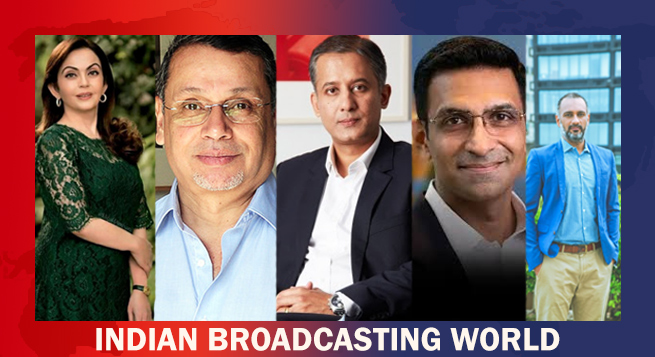 Kevin Vaz, Kiran Mani, Sanjog Gupta to head 3 verticals of JioStar
Kevin Vaz, Kiran Mani, Sanjog Gupta to head 3 verticals of JioStar 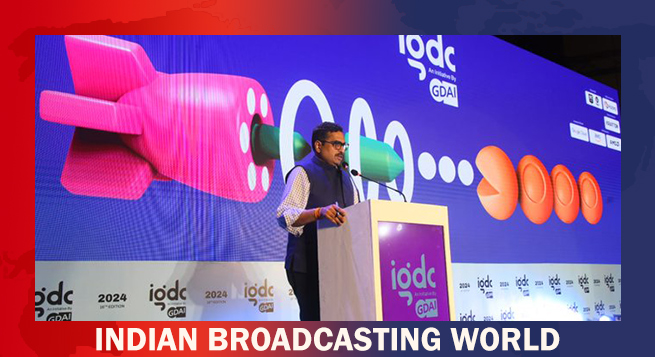 Govt & industry to prime gaming space for global dominance: MIB Secy Jaju
Govt & industry to prime gaming space for global dominance: MIB Secy Jaju 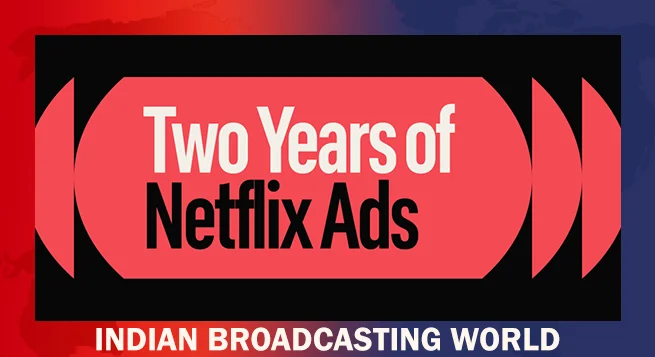 Netflix ad-supported tier touches 70mn MAUs globally
Netflix ad-supported tier touches 70mn MAUs globally 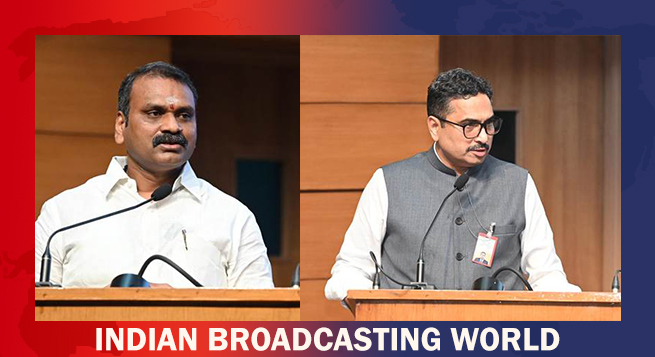 Minister Murugan likens IFFI to Cannes fest; ‘Better Man’ opening film
Minister Murugan likens IFFI to Cannes fest; ‘Better Man’ opening film 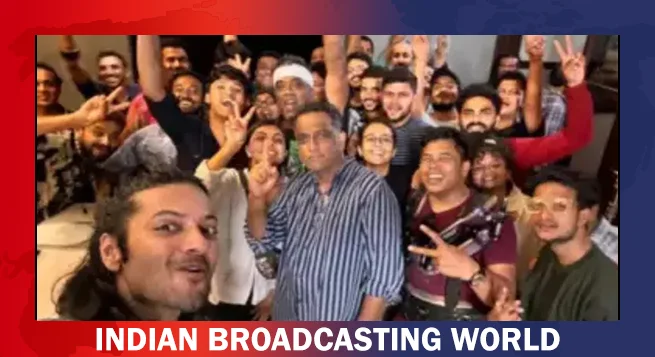 Ali Fazal wraps up filming for ‘Metro In Dino’
Ali Fazal wraps up filming for ‘Metro In Dino’ 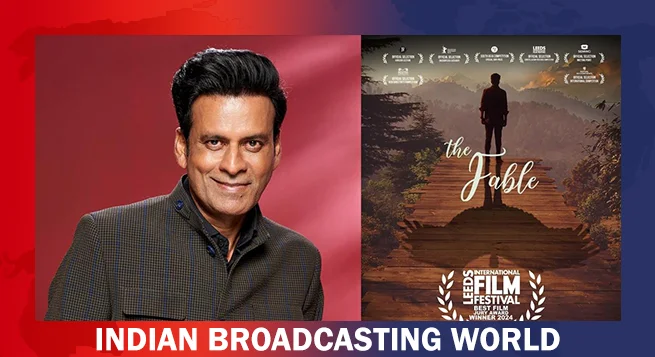 ‘The Fable’ wins best film at the 38th Leeds International Film Festival
‘The Fable’ wins best film at the 38th Leeds International Film Festival 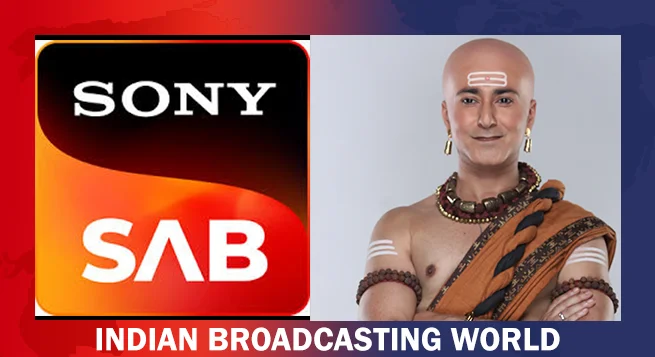 Sony SAB brings back ‘Tenali Rama’ at 8 pm slot
Sony SAB brings back ‘Tenali Rama’ at 8 pm slot 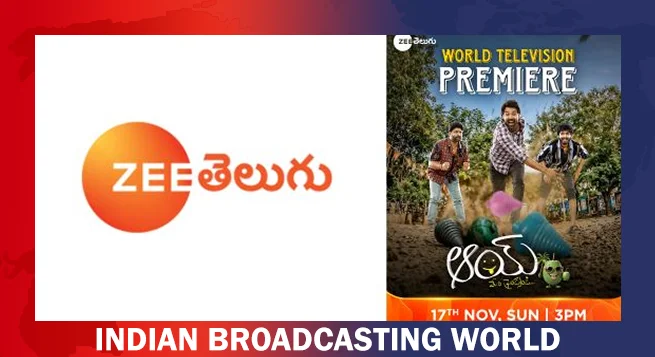 Zee Telugu to premiere ‘Aay’ on November 17
Zee Telugu to premiere ‘Aay’ on November 17 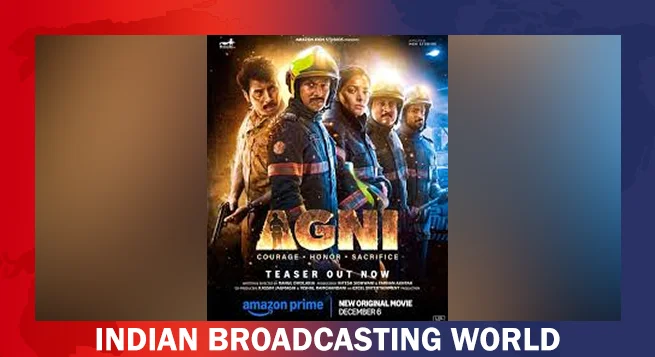 Release date of Pratik Gandhi, Divyenndu-starrer ‘Agni’ announced
Release date of Pratik Gandhi, Divyenndu-starrer ‘Agni’ announced 


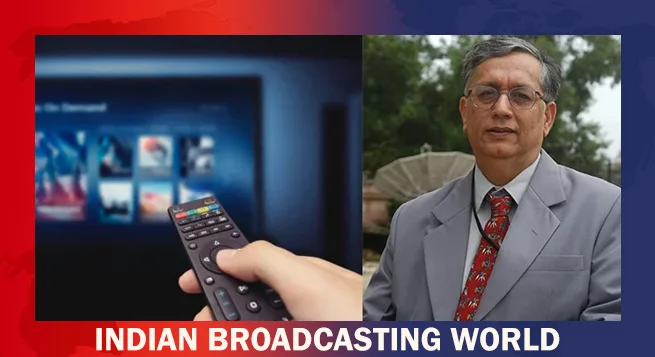






Absolutely incisive and detailed summarisation that can be deployed for transformation-